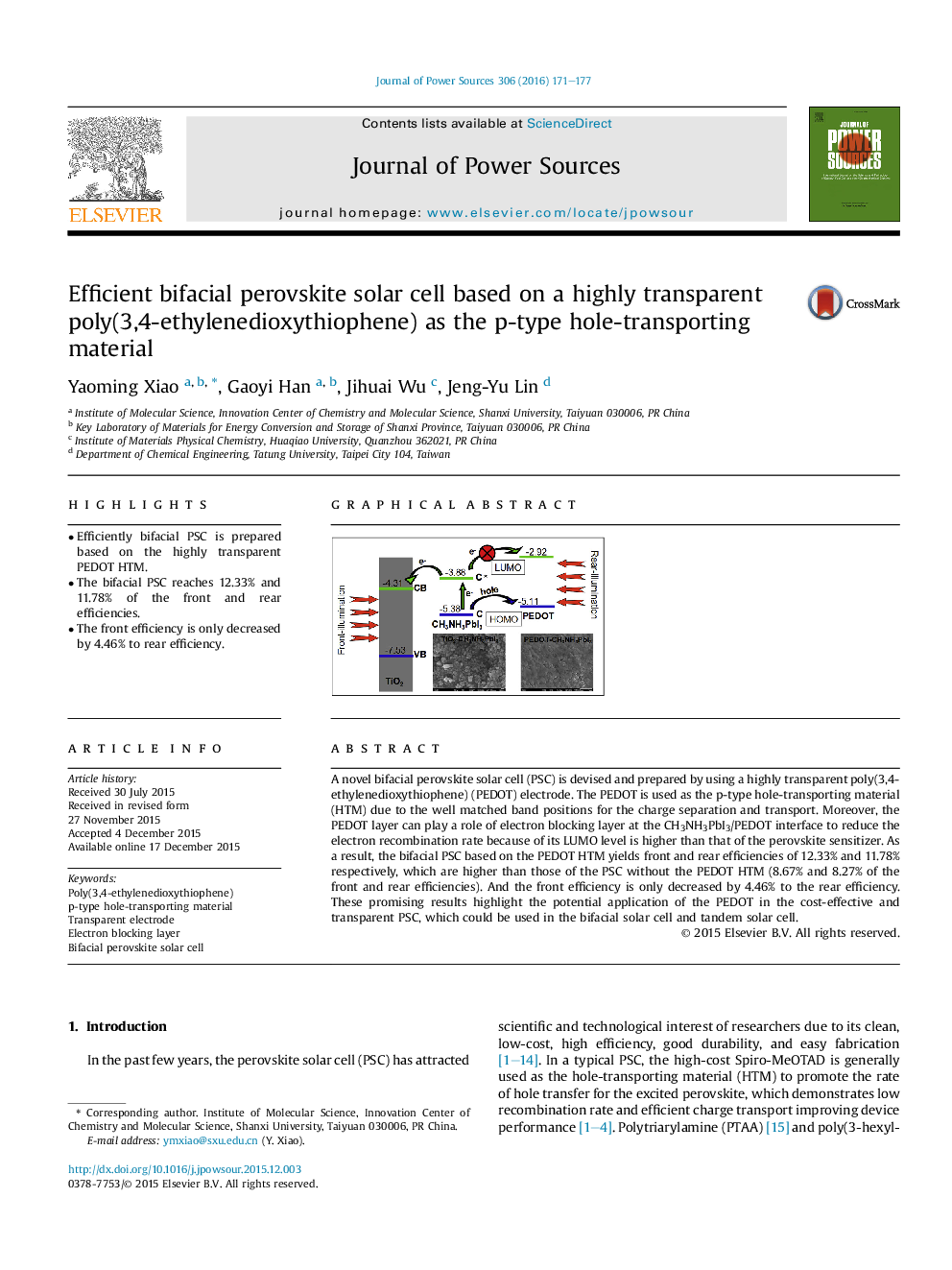| کد مقاله | کد نشریه | سال انتشار | مقاله انگلیسی | نسخه تمام متن |
|---|---|---|---|---|
| 1292423 | 1497926 | 2016 | 7 صفحه PDF | دانلود رایگان |

• Efficiently bifacial PSC is prepared based on the highly transparent PEDOT HTM.
• The bifacial PSC reaches 12.33% and 11.78% of the front and rear efficiencies.
• The front efficiency is only decreased by 4.46% to rear efficiency.
A novel bifacial perovskite solar cell (PSC) is devised and prepared by using a highly transparent poly(3,4-ethylenedioxythiophene) (PEDOT) electrode. The PEDOT is used as the p-type hole-transporting material (HTM) due to the well matched band positions for the charge separation and transport. Moreover, the PEDOT layer can play a role of electron blocking layer at the CH3NH3PbI3/PEDOT interface to reduce the electron recombination rate because of its LUMO level is higher than that of the perovskite sensitizer. As a result, the bifacial PSC based on the PEDOT HTM yields front and rear efficiencies of 12.33% and 11.78% respectively, which are higher than those of the PSC without the PEDOT HTM (8.67% and 8.27% of the front and rear efficiencies). And the front efficiency is only decreased by 4.46% to the rear efficiency. These promising results highlight the potential application of the PEDOT in the cost-effective and transparent PSC, which could be used in the bifacial solar cell and tandem solar cell.
A novel bifacial PSC based on the highly transparent PEDOT HTM yields front and rear efficiencies of 12.33% and 11.78% respectively. The front efficiency is only decreased by 4.46% to rear efficiency. The PEDOT acts as a function of HTM to enhance the device performance due to the well matched band positions for the charge separation and transport. Moreover, the PEDOT can play a role of electron blocking layer at the CH3NH3PbI3/PEDOT interface to reduce the electron recombination rate owing to its LUMO level is higher than that of the perovskite sensitizer.Figure optionsDownload as PowerPoint slide
Journal: Journal of Power Sources - Volume 306, 29 February 2016, Pages 171–177